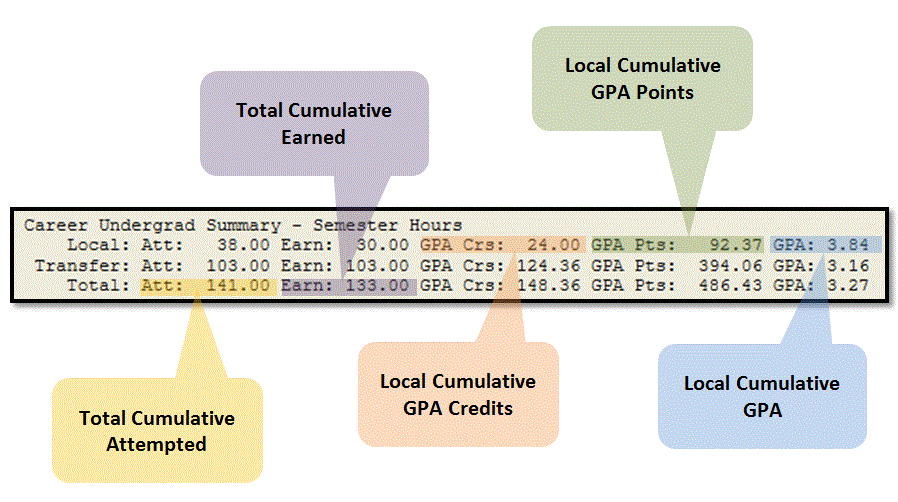GPA Realtime Advising Estimating System
Please enable your browser to allow Javascript and pop-up windows.
This is for informational purposes only. Please see your advisor for strategic academic planning.
This calculator allows you to forecast your cumulative and term GPA, as well as your cumulative and course completion rates. Your results might change based on projected academic performance during the current or upcoming semester.
Please Note:
- GPA is a NUMBER entry; do not enter a letter grade (hover to see chart
A = 4.00 A- = 3.67 B+ = 3.33 B = 3.00 B- = 2.67 C+ = 2.33 C = 2.00 C- = 1.67 D = 1.00 F = 0 - For further details on grade calculation, please see Policy 2080
- Satisfactory Academic Standing Policy is defined as:
- Cumulative Metropolitan State GPA of 2.0 or higher AND
- Cumulative completion rate of 67% of credits, both transfer and completed, at Metropolitan State
- Please see Policy 2050 for further detail
- For instructions on how to get an unoffical transcript from your e-services account Click here.
- Detail transcript image references: Advisor/Faculty version Student version
- This GPA calculator and forecaster only works for Metropolitan State University credits.


|
This table allows you to forecast the impact of your current or upcoming semester on your academic performance. For accurate calculations, use ONLY Metropolitan State credits with this semester forecaster. (Total number of credits here must match the number of credits entered as registered / current credits above.)
Semester Completion Rate: Cumulative Completion Rate: |

Increasing GPA and Completion Rate Over Several Credits
| Use this part of the form to see a complete report of your GPA and Completion Rate projected over a range of credits. This will show in a separate report window. Re-enter data to redo various forecasts and scenarios. Please Note:
Please enter a Cumulative GPA goal: |
fred.carpenter@metrostate.edu ronyro@metrostate.edu
Under testing please contact for distribution
Creative Commons License CYNCSA
/New Main Graphic Bk wo sky.jpg)
